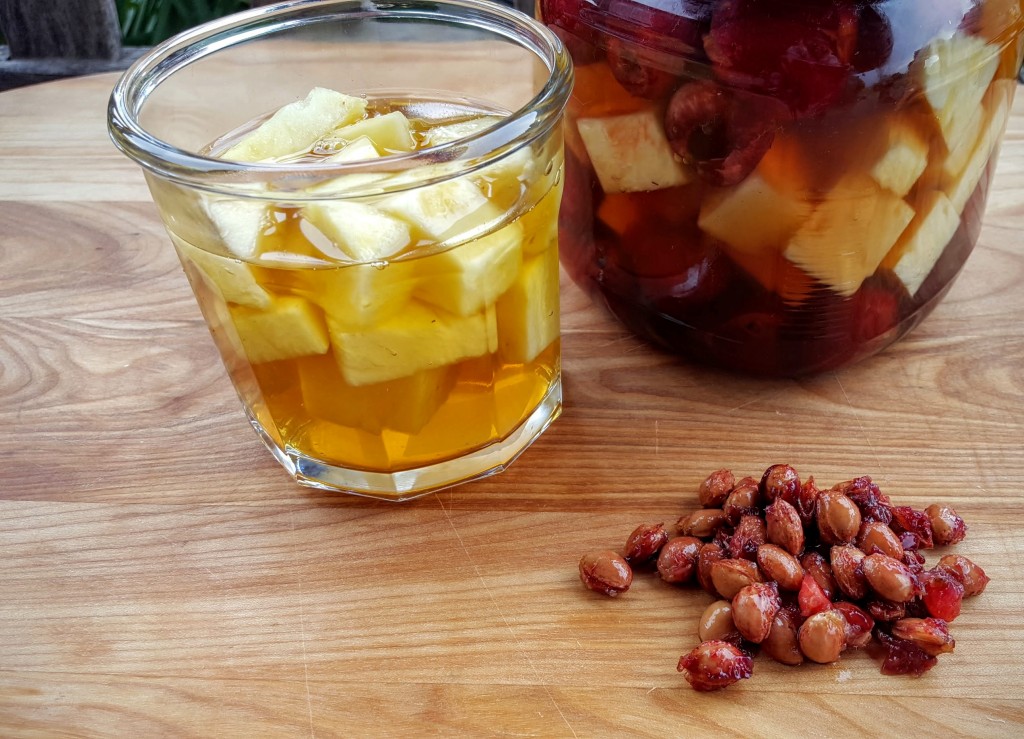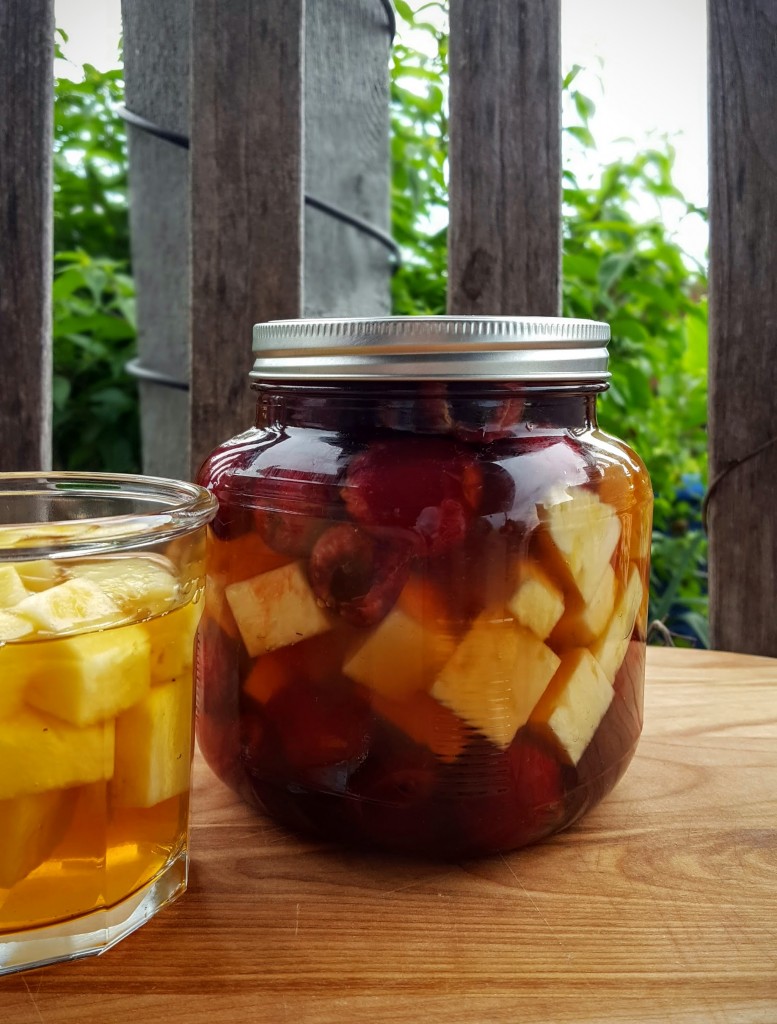When I was in high school in the early 80s, I probably had an unhealthy crush on my English teacher. Honestly, the attraction was definitely more intellectual. I did not find him necessarily attractive, but I was in awe of his intellect.
He suggested that I read John Updike’s Rabbit Run and I jumped at the chance. (As a career educator and former English teacher myself, I now wonder at the appropriateness of this reading suggestion.) I enjoyed Updike and went on to borrow Rabbit Redux and the rest of the Rabbit “series.” The Witches of Eastwick appeared in print when I was a senior in high school and I had to own a copy.
I recently dug out the old novel.
Why, do you ask? Because this month’s Food ‘n Flix feature is the film version of Updike’s 1984 novel. The film debuted in 1987 and again, I rushed to see it. (Jack Nicholson bears somewhat of a resemblance to my old English teacher.) As I recall, I was disappointed with the film as is often the case with movies based on novels.
After rewatching the film again for Food ‘n Flix, I found that I was a little more forgiving. Yes, the film is a bit over-the-top and a lot of the allegory of the novel is lost, but I enjoyed the film and revisiting the mindset, fashion, and mores of the 80s as they are depicted in the film. (The novel is actually set in the 60s.)
To my surprise, there is a lot of food in the film. There is also a lot of booze.
The inspiration for my recipe comes from all the fruit laden tables in Daryl’s mansion. There seemed to always be fresh grapes, figs, pineapples….
…and cherries (or cherry pits).
Wicked Fruit
1 lb. sweet cherries, pitted
1 lb. pineapple, cut in chunks (about one medium pineapple)
2 c. whiskey
1 c. Amaretto
1/4 c. honeyPrepare fruit and layer in a large jar. Heat whiskey, Amaretto, and honey in a small saucepan until simmered and honey is dissolved.
Pour hot liquid over fruit.
Let stand until room temperature and then refrigerate for at least three days before serving.
The whiskey represents Daryl’s wickedness but the honey and Amaretto symbolize the sweetness of Alex, Sukie, and Jane.
Dump this fruit in some seltzer water with a bit of lime for a nice wicked cocktail. (I was going to make this and present it here as a Horny Little Devil, but I ran out of time. Please note, I am probably drinking one tonight, though.) If you are feeling extremely impish, eat these right out of the jar. For a more devilish treat, pour over vanilla ice cream with lots of whipped cream. I also want to use some of the fruit in a pie with fresh blueberries or blackberries.
I started a list of the food in the film, but I will leave that to Kimberly at Coffee and Casseroles who is the host this month. You can see her announcement post here.
Instead, I will give you a few of my observations on Updike’s view (as seen in the book and the film).
Alexandra is definitely the mother-goddess and fertility figure of the three “witches.” She is shown sculpting her Venus of Willendorf-type figures in the film’s first scenes and later depicted with a huge basket of fresh vegetables on her lap during the storm that blows Daryl into town.
Sukie, with her clan of children, can also be seen as a fertility figure. Sukie seems the most innocent of the three to me (but perhaps that is Pfeiffer’s portrayal of her).
Jane is definitely repressed and is childless and barren.
Repression and rebirth seem to be a theme. All three women are repressed in some sense, as artists, women, mothers….Their repressed desires cause their “coven” and their women’s intuition to conjure up the devil, a devil who meets all their needs. Do they bring the evil and “local turpitude” to town? Or, is it Daryl that seeks them out? Is Daryl the devil or their savior? The ladies’ “perfect” man/imp turns into a temper-tantrum-throwing-devil-child. Who conjured whom?
I think it is safe to argue that Updike’s version of women includes witch-sluts and paranoid screechers (ala Filicia), all of which harken back to the Salem Witch Trials.
I have no answers and I am sorry about this literary treatise gone awry, but I think it is safe to say that The Witches of Eastwick is a whacked out Puritan morality tale…..
If you haven’t seen the film, make up some Wicked Fruit and sit down to watch it. I am sure with libations it is even more enjoyable.
Please consider our little group at Food ‘n Flix for June when Evelyne at CulturEatz is hosting I am Love.





I love that you made something sweet for this. And I agree, that Sukie comes across “sweet” in the movie version because of Pfeiffer’s performance.-Kimberly (Coffee and Casseroles)
Thanks so much for hosting, Kimberly. I really enjoyed it.
I love the direction you went with this the perfect combination of naughty and nice! One of these days I’ll pick up the book and see the origins of this story. And how curious that your English teacher somewhat resembled Jack Nicholson… 😉
Just a bit shorter and probably not as diabolical.
Don’t know about the film…but that wicked fruit sounds really interesting.
Thanks, Angie.
I’ve never read the book or seen the film. The closest I’ve gotten to it was for a few days I stayed at the same hotel that housed the cast when they were filming in Boston. Doesn’t really sound like my cup of tea, but who knows? Love the Wicked Fruit, though. Definitely my sort of dish. Thanks!
Wow, now I bet there’s a story there. Too bad it was before selfies.
The fruit has to be wickedly delicious! Wickedly good book and movie too!
Thanks, Pam.
As an author, I was never much of a John Updike fan, Debra. I did, however, find him quite refreshing as a critic. Your Wicked Fruit, sounds devilish. I love that it steeps up in a matter of days. You can never go wrong when cherries and Amaretto are involved in my book, Debra…
Thanks for sharing…
Yen, I forgot about his critical writing…..
My memories of that movie and novel are vague. I must have read/seen them when each was new. I like your study of the way food characterized the various witches.
best… mae at maefood.blogspot.com
Again, the novel is less silly but is definitely an acquired taste as wel.
Wickedly delicious! I can’t wait to try this. Thanks for sharing.
Thanh, Camilla.
Your wicked fruit sounds wickedly delicious, especially spooned over a little ice cream at the end of a summer meal.
Wickedly delicious….makes this almost sound like a sweet kids cereal. Lol
[…] I have some responsibilities and commitments with Food ‘n Flix and Cook the Books. (Lately since CLUE folded, these are my only blogger clubs.) Both FnF and […]
Looks like we were on the same page with boozy fruit for this round. 😉 I love your combination of cherries and pineapple and the amaretto and honey sound lovely with the whiskey and fruit too.
One of these days I really am going to get around to reading the book!
We were definitely on the same page and I can’t wait to try the boozy cherries you posted.
I love this Wicked Fruit and I am sure it was perfect in your Horny LIttle Devil.
It was a pretty tasty and easy cocktail.
How cool that you have read the book, and found it. And I think you are the only to shoot pics of the pits ha ha. Great recipe, these fruits look boozy and delicious.
I’m surprised I could find it. I thought there would be more pits! 🙂 (But it is kinda gross.)
I love your recipe and that you have a sort of history with the book and movie! Thanks for sharing!
I am still making cocktails from that big jar. Thanks, Amy.
[…] GET THE RECIPE […]